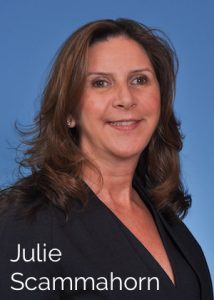
As part of its continued efforts to put a series of massive scandals behind it, Wells Fargo recently outlined some changes it has made to how the internal audit function is structured, including adopting a more centralized system of internal audit. The troubled bank also named a new chief audit executive.
Last week, Wells Fargo issued a government-mandated update on its efforts to reform its governance, risk management, and compliance systems. “The report addresses actions Wells Fargo has taken — and continues to take — to improve its culture, make things right for customers who were harmed, revamp its organizational structure, and strengthen risk management and controls,” the bank said in a statement.
In September 2016, the bank paid $185 million to settle charges that sales agents created as many as 3.5 million unauthorized customer accounts in order to meet aggressive sales goals. Wells Fargo has also later disclosed that it previously overcharged auto and mortgage borrowers, charged unnecessary fees, sold misleading products, and altered documents about business customers, leading to billions in fines and the departure of several senior executives.
Internal Audit Reforms
Along with many other initiatives, the 103-page report detailed several changes that Wells Fargo has made to internal audit. It has moved to centralize the internal audit function and break down the silos that contributed to the problems and compliance failures. It also created new internal audit teams, including teams dedicated to overseeing consumer banking practices, enterprise risk management, and capitalization. It also formed a shared services audit team dedicated to data analytics and innovation.
The bank has also bolstered the internal audit function and oversight at the board level. According to a report in The Wall Street Journal, the bank has increased its internal audit staff size by nearly one-third to 1,350 employees during the past two years, and has also added more experienced directors to the board’s risk committee.
Wells Fargo CEO Tim Sloan says the reforms will help the bank recover from the series of fiascos, but that there is still work to be done. “This report represents an important milestone in our work to rebuild trust with our stakeholders and our commitment to build a better company,” said Sloan. “While we have more work to do, we are making progress in our work to build the most customer-focused, efficient, and innovative Wells Fargo ever.”
According to the bank’s report: “We’ve created the following new groups or realigned activities as follows:
- The Consumer Banking Audit Team, a consolidated consumer-focused audit group, enables a more customer-centric and integrated audit approach across all consumer lines of business and enhances our ability to identify risks and inconsistent consumer practices and application of laws and regulations. This group also has responsibility for reviewing the company’s Customer Remediation Center of Excellence, as well as coordinating related audit work performed by line of business audit teams around consent orders and the company’s risk target operating state to ensure comprehensive audit coverage.
- The Enterprise Risk Management Audit team is responsible for Strategic Enterprise Risk Management, Regulatory Relations, and Management/Board-level governance, including the review of the risk management framework, the company’s risk target operating state, consent orders, and other regulatory matters.
- A dedicated audit resource is aligned to the company’s conduct risk management activities, which are covered by enhanced coverage strategies.
- A Capital and Model Risk Management Audit team is responsible for Basel, Capital Adequacy Process, and Model audit coverage, through the centralization of resources previously allocated across other audit teams.
- A Shared Services Audit Team, which includes Data Analytics & Innovation resources, provides shared testing services across Audit Services.
- An expanded leadership team provides enhanced strategic focus and oversight and improves our organization’s effectiveness, ensuring comprehensive assessment and coverage of key risks.”
New Audit Leadership
The company also named a new chief audit executive, Julie Scammahorn, who replaces acting CAE Kim Bordner. The bank declined to say if Bordner would be staying at the bank. David Julian, who took the job of chief auditor in 2012, began a leave of absence at the bank last October, but was not mentioned in the statement.
 Scammahorn has more than two decades of experience in the financial services industry and most recently served at Citigroup Inc. as chief auditor of Citibank, and had direct audit responsibility for anti-money laundering and compliance.
Scammahorn has more than two decades of experience in the financial services industry and most recently served at Citigroup Inc. as chief auditor of Citibank, and had direct audit responsibility for anti-money laundering and compliance.
Scammahorn will join the company in April and will be based in San Francisco. She will report to CEO and President Tim Sloan and to the Audit and Examination Committee of the company’s board of directors. She will also serve as a member of the company’s operating committee.
“Julie brings significant experience and a proven track record to this role, having led large audit functions for global financial services institutions,” Sloan said. “Her leadership will ensure the continued strength of our audit function as we work to achieve our goal of having the most effective risk management in the industry. In addition, I want to thank Kim Bordner for serving effectively as acting chief auditor during the transition period.”
“As chief auditor, Scammahorn will lead the Wells Fargo Audit Services organization of approximately 1,350 team members who deliver independent and objective internal audit services such as assessments and credible challenge regarding the company’s governance, risk management, and control functions,” the bank said in a statement.
Uphill Climb
Scammahorn and the rest of the internal audit team have some hard work to do to put the series of scandals behind the bank. The phony accounts scandal and other scandals have become a case study in risk management failure and the poster child for how not to run the internal audit, compliance, and risk management functions.
While it appears that Wells Fargo is moving in the right direction, it’s still too soon to say if it can fully recover from the problems. The bank still faces legal and regulatory difficulties and must rebuild trust with customers, which is a tall order. The stock still trades near a five-year low. ![]()


This report is good for me to share with my company which is struggling to adapt itself to embracing good governance practices. My Group Executive Chairman is struggling to embrace the fact that financial reporting should be guided by rules. Due to our failure to embrace good practices, we have struggled in the past three years to source refinancing from reputable organizations.